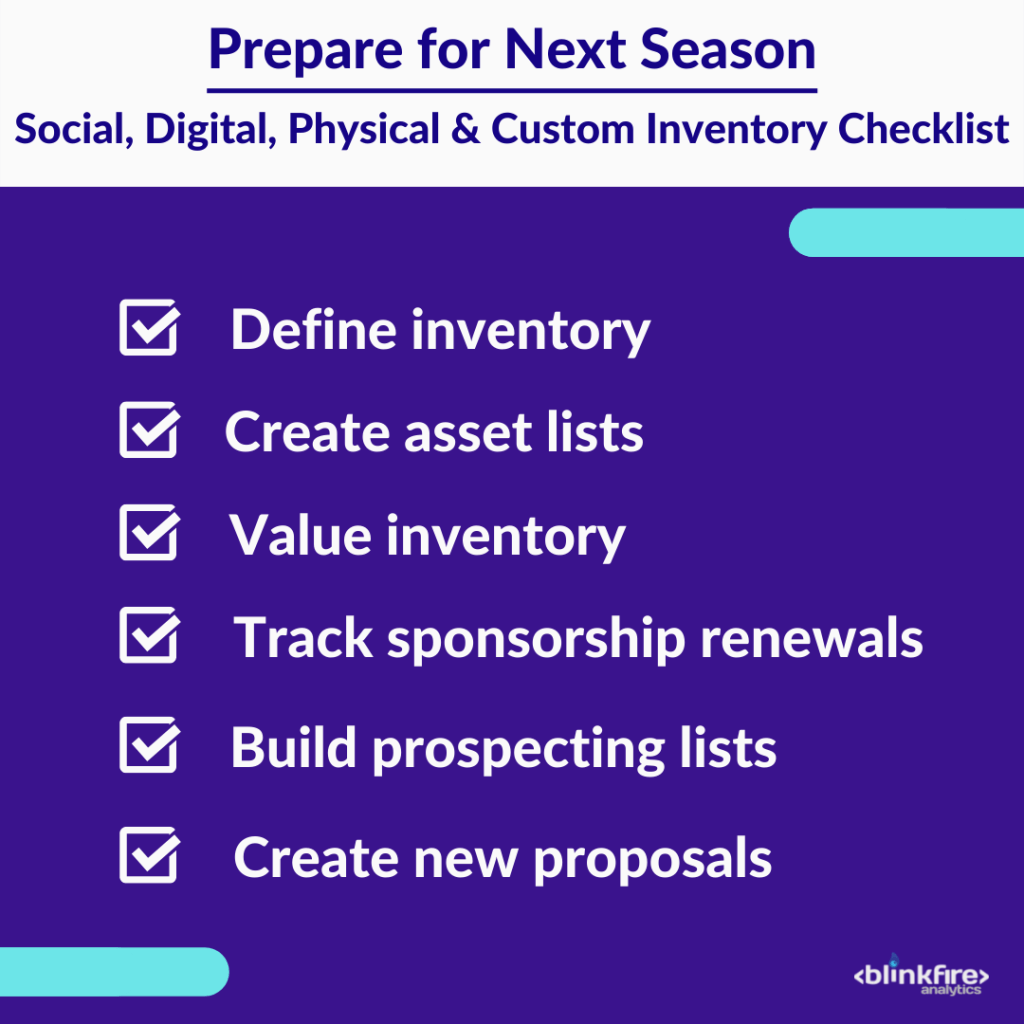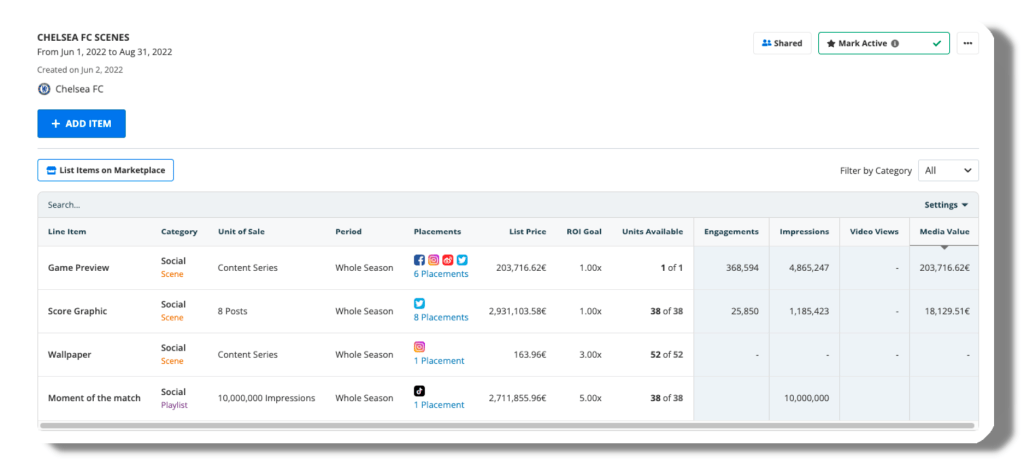Inventory Lists: Prepare for Next Season’s Sponsorships
The 2021-2022 season is over for many teams and leagues, which means the long-awaited, much-deserved offseason is here. While the offseason means no games and fewer practices for teams, a sports organization’s departments like partnerships, sales, and marketing are recapping the previous season and preparing for the season ahead.
We put a handy check-list together for departments to work through:

Wouldn’t it be nice to have a tool that could automatically generate inventory lists across social, digital, physical, and custom assets? Yeah, we think so too! That’s why we created Blinkfire Inventory Manager, the best way to list, manage, and track online and offline sponsorships and advertising assets. Today’s focus: Inventory Lists.
Inventory Lists
Let’s start with the first task on your checklist: Define your inventory.
What’s the best way to group and create an inventory list?
The answer is there are multiple ways to do this based on the social, digital, physical, and custom asset. Also, every organization is different in how they define inventory items, so the ability to create groups in a unique and custom way becomes important.

Here are just a few different scenarios we’ve seen:
- Sports organization A is comprised of different entities: men’s team, women’s team, academy, and esports club, and they want to create inventory lists for each entity. Each team’s inventory list then includes social, digital, physical, and custom assets.
- Sports organization B owns multiple teams, but prefers to create inventory lists based on the asset type. For example, they create a Social Media Inventory List, and in that list any and all social media assets and content series exist. These could be birthday posts, game preview posts, and score graphics.
- Sports organization C, with a men’s and women’s team, creates separate inventory items for all assets. For example, the organization’s physical assets are broken down by Stadium Ground Ad Board, Locker Room Tunnel, and Press Conference/Step & Repeat.
Pro Tip #1: Inventory Lists don’t only have to be for social media. They can also include digital assets, physical assets, NFTs, tokens, and more.
Pro Tip #2: The key to creating, managing, and tracking inventory lists is about customization. What works for one team may not work for another. That’s why building inventory that updates in real-time and offers collaboration is impactful.
Now that you’ve defined how your inventory should be tracked, the next two important tasks are 1) create asset lists and 2) value inventory. We’ll be back next week on the steps you can take.
Interested in learning more about Blinkfire’s Inventory Lists and Blinkfire Inventory Manager? Drop us a note.





No Comment